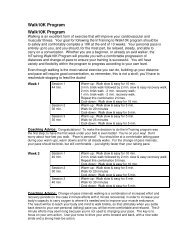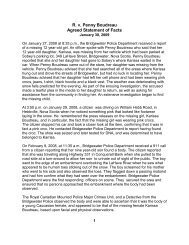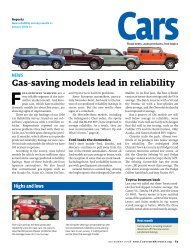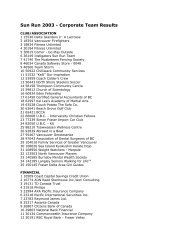Toivanen v. Electronic Arts (Canada) Inc. (No. 2 ... - Canada.com
Toivanen v. Electronic Arts (Canada) Inc. (No. 2 ... - Canada.com
Toivanen v. Electronic Arts (Canada) Inc. (No. 2 ... - Canada.com
You also want an ePaper? Increase the reach of your titles
YUMPU automatically turns print PDFs into web optimized ePapers that Google loves.
Severance pay recognizes that an employee does make an<br />
investment in his employer’s business – the extent of this<br />
investment being directly related to the length of the<br />
employee’s service. This investment is the seniority that the<br />
employee builds up during his years of service…Upon<br />
termination of the employment relationship, this investment of<br />
years of service is lost, and the employee must start to rebuild<br />
at another place of work. The severance pay, based on length<br />
of service, is some <strong>com</strong>pensation for this loss of investment:<br />
excerpt cited in MacRae v. Interfor (<strong>No</strong>. 2), 2005 BCHRT 462<br />
at para. 140 from Re Telegram Publishing Co. v. Zwelling<br />
(1972), 1 L.A.C. (2d) 1 (cited with approval in Rizzo & Rizzo<br />
Shoes Ltd. (Re), [1998] 1 S.C.R. 27 at para. 26)<br />
The purpose of severance was also addressed in detail in Ontario Nurses’<br />
Assn. v. Mount Sinai Hospital, [2004] O.J. <strong>No</strong>. 162 (“Nurses, Div. Ct.”)<br />
and by the Court of Appeal in Ontario Nurses’ Assn. v. Mount Sinai<br />
Hospital (2005), 75 O.R. (3 rd ) 245, [2005] O.J. <strong>No</strong>. 1739 (“Nurses”).<br />
In the Nurses decision, a provision in the Ontario Employment Standards<br />
Act (“ESA”) that disentitled disabled employees from receiving severance<br />
pay was challenged under s. 15(1) of the Charter. The arbitration board<br />
applied Law v. <strong>Canada</strong> (Minister of Employment and Immigration), [1999]<br />
1 S.C.R. 1 (the “Law Analysis”), and determined that there was no<br />
violation of s. 15(1) of the Charter, as the benefit of severance was denied<br />
because of the non-viability of the employment contract and not due to the<br />
nurse’s disability. The Divisional Court disagreed with the board’s<br />
Charter analysis, and found that the dignity of the severely disabled was<br />
violated by their exclusion from entitlement to severance pay. The<br />
Divisional Court held that s. 58(5)(c)of the ESA was contrary to the<br />
Charter and of no force and effect. The Court of Appeal upheld the<br />
decision of the court below, and found that the provision had a profoundly<br />
discriminatory impact on the most disabled.<br />
Although the Nurses decision is a Charter case, I find the Courts’<br />
determinations concerning the purpose of severance applicable and helpful<br />
to the present case.<br />
The Court of Appeal held that the purpose of severance was to provide an<br />
earned benefit to long-serving employees: at para. 38. It went on to state:<br />
Further, to the extent that severance pay is intended to ease the<br />
transition of terminated employees to other employment, the<br />
need of disabled employees for support in retraining and the<br />
acquisition of new skills may be even more pressing that that<br />
of other terminated employees…<br />
30
















